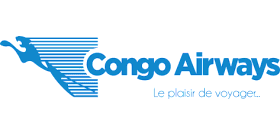 Congo Airways Eyes Revival with Embraer E190 Amid Industry Shake-Up
Congo Airways Eyes Revival with Embraer E190 Amid Industry Shake-Up
After a prolonged pause in operations, Congo Airways is gearing up for a return that will be closely watched by aviation professionals across sub-Saharan Africa. The airline, which halted activities in April, is preparing a strategic comeback anchored by the acquisition of an Embraer E190—a move that both signals intent and reignites debate about the future of national carriers in a rapidly evolving regional landscape.
This latest chapter is being written with the support of the Canadian firm Xinatis, which is facilitating the delivery of the 18-year-old E190 (formerly operated by SKYhigh Dominicana). The aircraft, currently stored in Toulouse for a comprehensive maintenance overhaul, was procured under the stewardship of CNSS, Congo Airways’ majority shareholder. Industry sources indicate that this could be just the start, as plans are reportedly in place to expand the fleet to as many as three Embraer E190s—suggesting an ambition to recapture lost market share and restore a measure of national pride in the Democratic Republic of Congo’s skies.
The choice of the Embraer E190 is particularly noteworthy. Renowned for its efficiency on medium-haul routes and relatively low operating costs, the E190 is a proven workhorse for airlines seeking flexibility and reliability in challenging markets. For Congo Airways, this model could offer a practical solution for connecting key cities within the DRC and across the wider Central African region, providing much-needed frequency and capacity where demand is robust but competition is fierce.
Yet, the path to a sustainable revival is anything but clear. Over the past five years, Congo Airways has cycled through five different chief executives, a signal of persistent instability at the highest levels. This leadership churn has been mirrored by ongoing financial pressures, leaving the company’s long-term solvency in question. Complicating matters further is the arrival of Air Congo, a new competitor that has rapidly asserted its presence on critical domestic and regional routes, intensifying the battle for passengers, market share, and commercial partnerships.
For African aviation strategists, Congo Airways’ latest maneuver offers several lessons and raises important questions about the future of state-backed carriers in the region. The airline’s decision to opt for a used, well-supported aircraft type like the E190 reflects a pragmatic response to both capital constraints and operational realities. Unlike widebody aircraft that demand high load factors and complex maintenance infrastructure, the E190 can be deployed flexibly, supporting a mix of short and medium-haul missions with quick turnaround times and lower risk of underutilisation.
The involvement of Xinatis and the central role of CNSS as a majority shareholder also highlight a broader trend: African carriers are increasingly turning to international partners and creative financing arrangements to modernise fleets and shore up balance sheets. This is especially pertinent as banks and lessors tighten lending criteria in the wake of global aviation volatility, making it vital for airlines to present credible business plans and demonstrate operational discipline.
However, the shadow of past turbulence looms large. A revolving door in the executive suite has made it challenging for Congo Airways to establish a coherent vision or execute long-term strategies. Staff morale, supplier confidence, and regulatory compliance can all suffer when leadership changes frequently, undermining attempts to build a stable, customer-focused brand. Additionally, the airline’s financial fragility has constrained investment in critical areas such as training, technology, and maintenance—factors that are crucial for service reliability and passenger safety.
The heightened competition from Air Congo introduces another layer of complexity. As the aviation market in the DRC matures, new entrants are targeting underserved routes and tapping into pent-up demand from both business and leisure travellers. This competitive pressure can be a double-edged sword: while it drives higher standards and innovation, it also compresses margins and exposes weaker operators to existential risk. For Congo Airways, the key will be to carve out a clear niche—whether through superior connectivity, better service quality, or strategic partnerships with international carriers.
For the wider African aviation community, the unfolding Congo Airways story is a microcosm of broader industry trends. Airlines across the continent are grappling with similar challenges: fleet renewal, leadership stability, and the imperative to adapt to shifting passenger expectations. Those that succeed will be the ones who embrace agility, leverage data-driven decision-making, and foster a culture of continuous improvement from the hangar to the boardroom.
Looking ahead, Congo Airways’ successful relaunch could serve as a beacon for other African carriers navigating turbulent times. If the airline can stabilise its leadership, restore financial health, and consistently deliver reliable service with the new Embraer E190 fleet, it will not only reclaim its place in the DRC’s aviation market but also demonstrate the viability of smart, right-sized fleet investments for state-backed operators across the region.
This comeback, while still uncertain, underscores the importance of resilience, partnership, and operational excellence in Africa’s evolving aviation ecosystem. For those watching from the continent’s bustling airports and emerging travel hubs, the next steps taken by Congo Airways could offer valuable insights into the future of airline strategy, investment, and regional connectivity.
